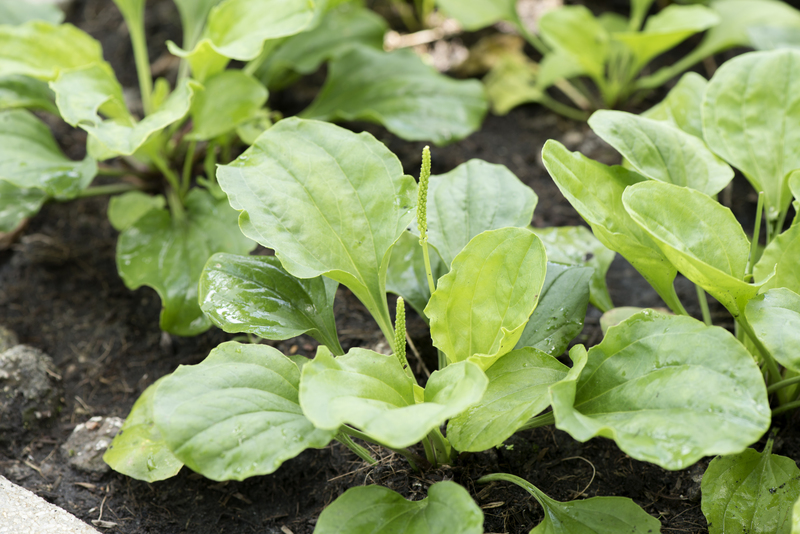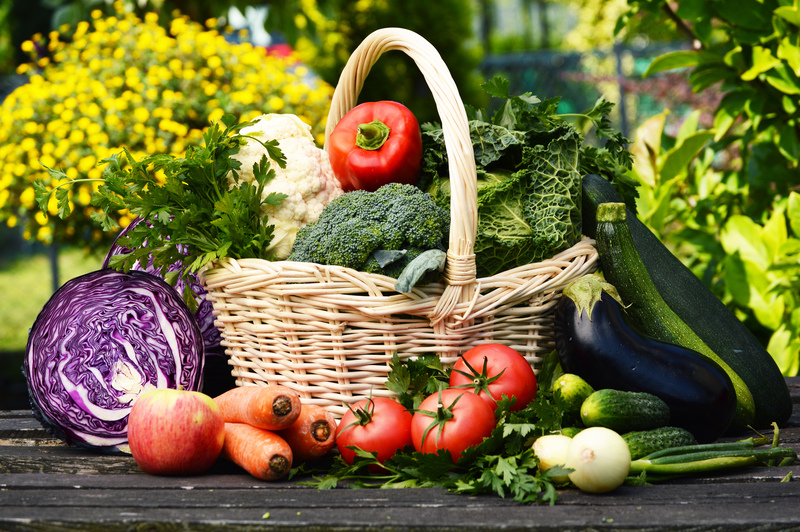Designing a Safe and Fun Garden for Children
Posted on 11/09/2025
Designing a Safe and Fun Garden for Children
When it comes to designing a safe and fun garden for children, there's a lot more to consider than simply planting some flowers and placing a swing set. Creating a unique, engaging, and secure outdoor space provides kids with a place to explore, learn, and grow, while also giving parents peace of mind. In this detailed guide, we'll explore practical tips, creative ideas, and essential safety measures to help you craft the perfect child-friendly garden.
Why Is a Kid-Friendly Garden Important?
An outdoor play area is more than just a playground--it's an opportunity for children to connect with nature, build physical and social skills, and develop healthy habits. A thoughtfully designed garden can inspire curiosity, creativity, and independence. Ensuring that it is safe and stimulating is fundamental to providing children with a positive outdoor experience.
- Physical activity: Gardens invite kids to run, climb, and explore, promoting healthy movement.
- Learning opportunities: From planting seeds to spotting insects, gardens offer hands-on lessons.
- Emotional development: Safe play spaces help develop confidence and social skills.
- Family bonding: Time spent gardening together fosters lasting memories and teamwork.

Main Principles of Designing a Safe and Fun Children's Garden
1. Prioritize Child Safety First
Safety is the foundation for any child-friendly outdoor garden. Before getting creative, assess your garden for potential hazards and remove or modify them.
- Remove toxic plants: Many common plants can be harmful if ingested or touched. Research and choose only non-toxic, kid-safe plants like sunflowers, marigolds, and strawberries.
- Fence and secure boundaries: A secure fence not only keeps children in but also keeps out animals and intruders.
- Check for sharp objects: Eliminate sharp tools, broken pots, or hard-edged furniture. Ensure all structures are smooth and sturdy.
- Supervision zones: Design areas where children's activities are in clear view, making it easy for caregivers to supervise.
- Surface safety: Use soft surfacing like grass, wood chips, or rubber mulch under play equipment to minimize injury risks.
2. Encourage Play with Fun Features
A fun and engaging garden for children excites the imagination and provides endless entertainment. Incorporate diverse play elements to suit different interests and ages.
- Play structures: Swings, slides, and climbing frames are classics. Choose equipment appropriate for your children's ages and securely anchor them.
- Sand and water play: Sandpits, water tables, or small ponds (with safety barriers) allow for creative, sensory experiences.
- Edible gardens: Raised beds or small veggie patches let kids grow their own food, encouraging responsibility and healthy eating.
- Hideaways: Consider tents, tepees, or living willow dens for cozy spots where kids can retreat and read or play.
- Obstacle courses: Simple logs, stepping stones, or tunnels encourage active play and coordination.
- Nature features: Bug hotels, birdhouses, and pollinator-friendly flowers bring wildlife up close for observation.
Best Practices for Creating a Safe Child's Garden
Choose the Right Plants
Selecting plants that are safe and suitable for children is crucial. Avoid anything with thorns, toxic berries, irritant sap, or allergenic pollen. For a child-safe garden, try these favorites:
- Sunflowers - Fast-growing and cheerful, perfect for children to grow themselves.
- Lamb's ear - Soft and tactile, great for sensory play.
- Strawberries or cherry tomatoes - Edible, easy to grow, and delicious.
- Mint and basil - Fragrant and fun for sensory gardens.
- Lavender - Calming scent and gentle texture.
- Marigolds - Bright, hardy, and pest-repellent.
Tip: Always check a comprehensive list of toxic plants before planning your garden, such as those provided by the Royal Horticultural Society.
Design with Age in Mind
A garden for a toddler will look very different from one designed for older children. Adjust features, play equipment, and safety measures depending on your children's ages and developmental stages.
- Toddlers: Ensure everything is within sight, minimize height, and use simple, tactile toys.
- Preschoolers: Add slightly more complex climbing, balancing, and interactive play items.
- Older children: Consider sports spaces, treehouses, and areas for imaginative games.
Maintain Safe Surfaces
Ground surfaces should be soft to cushion potential falls. Consider garage, grass, artificial turf, play-grade bark chips, or shock-absorbing mats under play areas. Check surfaces regularly for trip hazards, such as exposed roots or uneven pavers.
Incorporate Sensory Experiences
A garden designed for kids should stimulate all five senses. Here's how to create a sensory-rich outdoor area:
- Sight: Brightly colored flowers, painted rocks, and wind spinners.
- Sound: Wind chimes, rustling grasses, and water features.
- Touch: Plants with interesting textures, sandpits, and mossy areas.
- Smell: Fragrant herbs and flowers.
- Taste: Edible plants like berries, peas, and kid-friendly herbs.
Innovative Play Zones for Engaging Children
1. The Secret Hideout
Kids love spaces that feel just for them. Build a secret hideout using living willow domes, bamboo teepees, or recycled palettes covered with climbing beans or sweet peas. These special nooks provide both adventure and a quiet retreat.
2. Creative Corners
Dedicate an area for messy, creative activities such as mud kitchens, painting boards, or chalk walls. Use wipe-clean surfaces or weatherproof materials to ensure longevity.
3. Wildlife Observatories
Encourage a love of nature by setting up bug hotels, butterfly feeders, and bird baths. Supply bug ID sheets for nature hunts or create a log pile for beetles and other fascinating insects.
4. Outdoor Learning Spaces
Include an area with a table and chairs under a shady tree, allowing for drawing, reading, or crafts in the fresh air. Learning outdoors inspires creativity and helps children engage in imaginative play.
5. Mini Allotments
Assign small "plots" for each child to plant their favorite flowers, herbs, or vegetables. This fosters responsibility and pride as they see the results of their hard work. Raised beds make planting and weeding easier for tiny gardeners.
Tips for Maintaining a Safe and Fun Garden for Kids All Year
- Inspect play equipment regularly--tighten, clean, and repair as needed.
- Keep pathways clear and free from slippery algae or moss.
- Ensure proper drainage to avoid muddy or flooded areas after rain.
- Store tools and chemicals safely out of children's reach, preferably in a locked shed.
- Themed seasonal activities: Plant bulbs in spring, hunt for colors in the fall, or create a winter-friendly wildlife corner.
Essential Features for a Safe and Exciting Garden
Good Lighting
Ensure pathways and activity zones are well-lit for evening play and safety. Solar lights are eco-friendly and provide an inviting glow.
Accessible Storage
Install weatherproof storage boxes or benches for outdoor toys, tools, and sports gear. Keeping the area organized reduces trip hazards and keeps the garden tidy.
Seating Areas for All
Add seating at both adult and child heights. A picnic table designed for kids encourages social outdoor meals and crafts.
Shade and Shelter
Provide shady spaces with trees, pergolas, or umbrellas. Shade keeps children comfortable and protects against sunburn, extending the hours they can spend outdoors.
Popular Child-Friendly Garden Themes
- Wildlife wonderland: Focus on biodiversity, pollinator plants, and bug-friendly features.
- Maze gardens: Use low hedges or sunflower rows to create winding, safe paths.
- Pirate/Adventure theme: Sand areas, treasure hunt clues, and rugged wood play equipment.
- Fairy tale settings: Enchanted corners, oversized mushrooms, and secret fairy doors in trees.
Common Mistakes to Avoid
- Ignoring plant safety: Double-check all plant species are safe for children and pets.
- Neglecting regular maintenance: Even the best design can become hazardous if not well-kept.
- Poor equipment installation: Always follow manufacturer guidelines and anchor play structures properly.
- Lack of variety: Mix different play elements and garden areas to cater to diverse interests.
- Insufficient shade and water: Hydration stations and shade are essential in warmer months.

Conclusion: A Garden That Grows with Your Children
Creating a safe and fun garden for children is a rewarding investment in your family's well-being. By prioritizing safety, choosing the right plants and play features, and designing for creativity, you give children the freedom to play, learn, and thrive outdoors. Remember, the best child-friendly gardens are those that evolve with your kids, changing as their skills and interests develop. Start small, involve your children in the planning and planting, and enjoy building a vibrant outdoor paradise together.
Ready to Transform Your Garden?
Start designing your own safe, fun, and engaging children's garden today! With a little creativity and some careful planning, your outdoor space will soon become a favorite destination for the whole family.
Frequently Asked Questions About Kids' Gardens
-
What are the best surfaces for a child-friendly play area?
Grass, rubber mulch, wood chips, and artificial turf are excellent choices for softening falls and preventing injuries. -
How can I keep my garden interesting year-round?
Include seasonal activities such as planting, harvesting, wildlife watching, and themed play spaces that change throughout the year. -
Is it safe to have a water feature?
Small, shallow water tables with close supervision are fine. For ponds or streams, always use secure fencing and covers to prevent accidental falls. -
How do I teach my kids to respect the garden?
Involve them in planting, watering, and weeding, and set clear boundaries on where they can and cannot play.
Designing a garden for children may take extra work, but the joy, learning, and safe play it brings are well worth the effort. Happy gardening!



